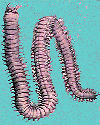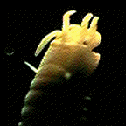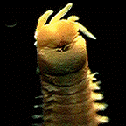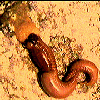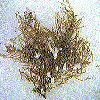Complex Worms and Lophoporates
Be sure to write about what you are learning in the lab section of your notebook. You will be expected to answer questions about the lab activity during the lab self test and lab quiz. It helps to have your text and coloring books open beside you for support.
| Refer to the Assigned Readings Below: | |
| Marine Biology Textbook | Chapter 7, pages 126 to 127 and 139 to 141 |
| Marine Biology Coloring Book | Plates 26 to 28 and 38 |
|
Phylum
Annelida (segmented worms): Polychaetes
|
||
|
1.
The bodies of bristle worms are divided into repeated segments.
Each segment has a pair of paddle-like appendages called parapodia.
|
||
|
2. The head of the palolo worm is adorned with sensory structures such as palps and eyes. |
||
|
3. The bristles of the sea mouse are long and hair-like which makes the animal look a little like a mouse.
|
||
|
4. Sedentary bristle worms live in semi-permanent burrows or tubes which they build from body secretions and particles. |
||
|
5. The spaghetti worm Amphitrite uses many long, narrow tentacles as tiny conveyor belts to deliver food particles to its mouth. |
||
|
6. The fan worm Sabella uses a crown of feathery radioles to filter food particles from the water. |
||
|
Phylum
Bryozoa (moss animals): Moss Animals
|
||
|
1.
In a Bugula colony the individuals are arranged in tiny shell
boxes.
|
||
|
2. Individuals in the colony obtain food with their tentacles.
|
||
|
3. Bryozoans are named moss animals because they look like plants.
|
||
|
Phylum
Brachiopoda (lamp shells): Lamp Shells
|
||
|
1.
A lamp shell might be mistaken for a clam because it looks like
one on the outside.
|
||
|
2. On the inside, a lamp shell looks different. It has a large horseshoe-shaped lophophore, which it uses for feeding.
|
||
|
3. A lamp shell also has a fleshy pedicle which it uses to attach to the bottom.
|
||
| Lab Activity 4.1 Simple Invertebrates |
Lab Activity 4.3
Molluscs and Jointed Legged
Animals
|
